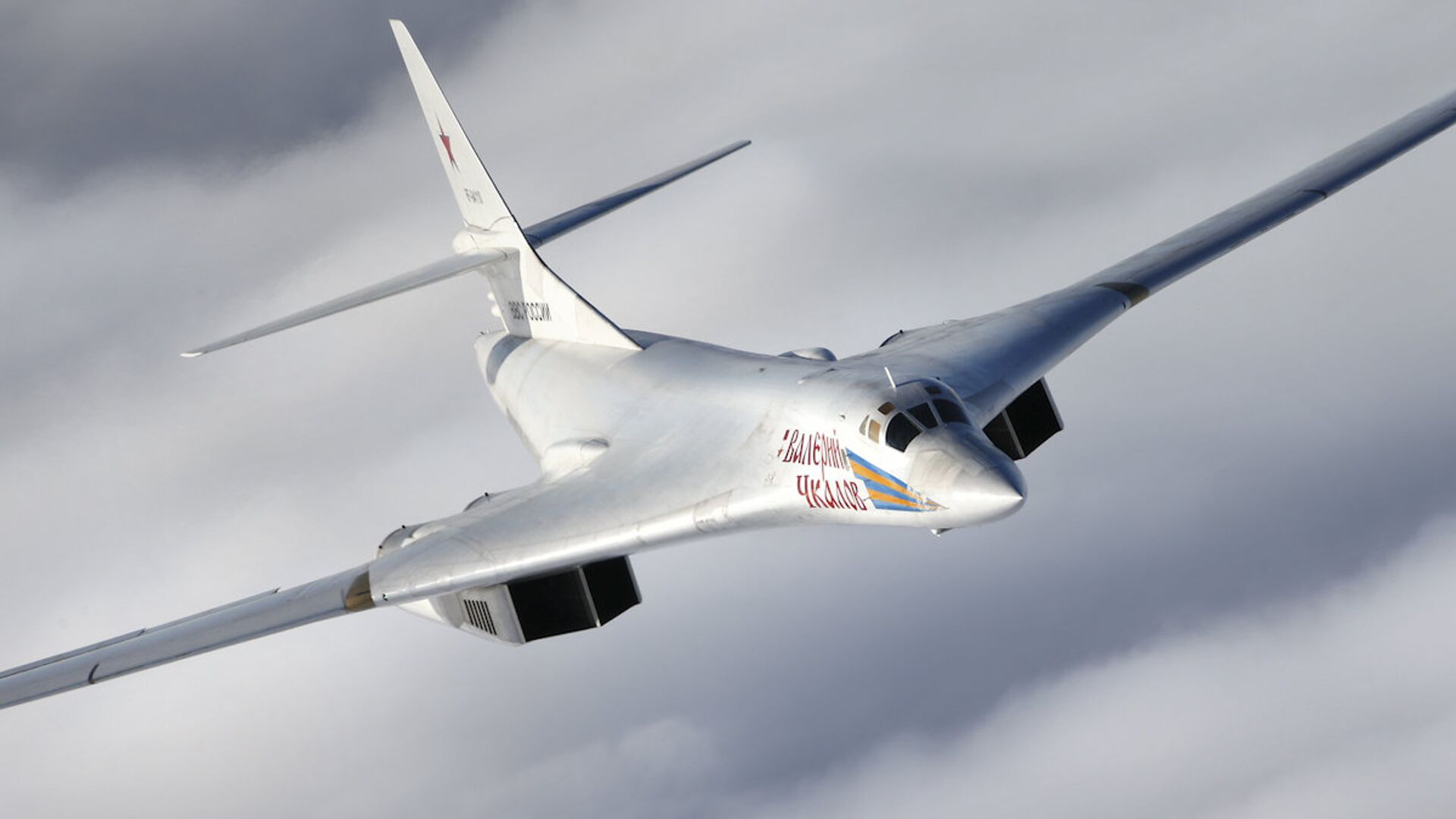'More Advanced & Unique:' Experts About Russia's Tu-160M Strategic Bomber
16:28 23.02.2024 (Updated: 17:46 23.02.2024)

© Photo
Subscribe
On Thursday, Russian President Vladimir Putin flew aboard an updated Tu-160M strategic bomber missile carrier. What are military experts' opinions on the aircraft?
"The technology is excellent. It really belongs to a new generation. Of course it can be accepted by the Armed Forces," President Putin said after completing the flight on the Tu-160M plane 'Ilya Muromets'.
The Tu-160M is an upgraded version of the Tu-160, dubbed the White Swan by Russian pilots. The new aircraft, which made its debut flight on January 12, has upgraded engines, sophisticated avionics, new weapons control and electronic warfare systems.
"In fact, what has been left of the old aircraft is the fuselage," Dmitry Drozdenko, a military analyst and chief editor of the Fatherland Arsenal Internet portal, told Sputnik. "The engines were replaced with the NK-32-02 of the 'second series'. That is, more advanced. The plane was completely shaken up in terms of avionics, radio-electronic equipment, control systems, everything. From an aircraft of the 20th century, it has become a warplane of the 21st century."
The NK-32-02 engines allow the upgraded White Swan to increase its flight range by a thousand kilometers, as Russian military expert Yury Knutov told Sputnik in February 2022.
The warplane's engine is a brainchild of Russian engineers. The distant prototype of the NK-32-02 was the NK-6, the world's first dual-circuit engine with an afterburner that boasted a maximum thrust of 22 tons. It was invented by prominent Soviet designer Nikolai Kuznetsov in the 1950s and successfully tested in 1956. Such engines appeared in the US only 15 years later.
The work on the creation of the NK-32 engine for Tu-160 began in 1977. In 1983, the new engine was ranked the first in the world in terms of thrust for combat aircraft. Decades later, in 2016, PJSC "Kuznetsov" announced that it would produce a new version of the famous NK-32.
Earlier, a source in the aircraft industry told Sputnik that the Tu-160M could be equipped with a rear-view radar which would allow the warplane to fire missiles "backwards" against air-to-air, surface-to-air missiles and fighters. The source added that "the use of rear-view radar on heavy bombers is reasonable, given that they are low-maneuverable and may not have time to turn towards the enemy."
'US is Struggling to Catch Up'
"Why are we upgrading [the Tu-160] warplane? The fact is that, from the point of view of [the Russian military] concept, a modern strategic bomber is not just a bomber, but a platform for launching strategic cruise missiles. They are launched at distances of 1,000 kilometers. Therefore, the task of modern aircraft is to quickly and efficiently reach the launch area and conduct the launch," explained Drozdenko.
Given that the Tu-160's niche has not been filled so far by any modern foreign aircraft, it appears rational and cost-effective to focus on its production, instead of pouring billions of dollars into highly-expensive military projects akin to the F-35 Lightning II Joint Strike Fighter program that cost reached a whopping $416 billion in 2023.
The military expert explained that the Tu-160M does not have analogs in the world. For instance, the US-made B1B had served as a bomber equipped for nuclear armament only until 2007. The US modern B2 war plane, also known as the stealth bomber, can carry nuclear weapons, but it cannot fire multiple cruise missiles loaded in a revolving launcher, like Russia's Tu-160/160M, according to Drozdenko.
"[As a result] the B2 Spirit can deliver a nuclear strike only when it is actually above the target, that is, not 1,000 kilometers away; it has to rely on its 'invisibility' to somehow overcome all air defenses, which is in fact an unrealistic task," the expert stressed.
Presently, the US is modernizing its old B-52 bombers, according to Drozdenko. In January the US press reported the Pentagon's $48.6 billion plan for the B-52 to extend its service life until 2060. The Boeing B-52 Stratofortress made its maiden flight 71 years ago. Simultaneously, the US is hastily developing its new Northrop Grumman B-21 Raider.
Russia's Tu-160/160M, capable of reaching almost Mach 2 speed (2,200 km/h) remains second to none, the expert argued.
"When NATO tried to intercept it, the plane simply folded its wings and in the blink of an eye, it was gone. The American F-35 fighters could not catch up merely in terms of speed. That is, a unique case: a bomber flies faster than a fighter. This is quite important," he said.
What are the Tu-160M's Tasks?
The military expert stressed that the Tu-160's main purpose is to carry combat duty with missiles, which are an important factor in Russia's deterrence and nuclear forces.
"Its main goal is to quickly launch missiles, and one [nuclear] missile would mean one metropolis [is destroyed]. This is one of the most important nuclear deterrent forces," Drozdenko pointed out.
"[The Tu-160M will perform] the same tasks that were previously performed by long-range aviation planes," Andrey Krasnoperov, military expert and Russian Aerospace Major, told Sputnik.
"We had a whole series of the Tu-16, the Tu-95, the Tu-22M aircraft. But they all have different ranges. Some have a lower speed; The Tu-16 and the Tu-95 are both subsonic and strategic. There is the Tu-22 supersonic aircraft, but their flight range is not as long as that of the Tu-160. [The Tu-160] used to fly safely to Venezuela. That is, they have a fairly long range, and they are the main carriers of [Russia's] bombs and strategic missiles. It is a weapon of deterrence."


